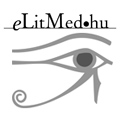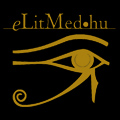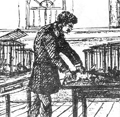The eLitMed.hu medical portal uses computer cookies for convenient operation. Detailed information can be found in the Cookie-policy.
Hungarian Immunology - 2002;1(04)
Content
[Molecular and cellular basis of fibrosis: recent insights to the pathomechanism of scleroderma from animal models and fibroblast studies]
[Scleroderma is a chronic, progressive connective tissue disorder featuring inflammation, fibrosis, vascular injury, and immunologic abnormalities. Fibrosis, a hallmark of the disease, is characterized by excessive synthesis and deposition of extracellular matrix components, mainly type I collagen in affected tissue. The key target organs are the skin, lungs, kidneys, gastrointestinal tract and heart. The pathogenesis of fibrosis remains poorly understood, and effective treatments are lacking. While unifying concept to explain the pathogenesis of fibrosis has not yet emerged, multiple alterations result in the development of pathological tissue fibrosis have been recently identified. Transforming growth factor-β, a potent profibrotic cytokine plays a key role in the process. There is growing knowledge on identifying the cytokine and growth factor mediators of fibrosis, characterizing their interactions, and in delineating the cellular and molecular signaling pathways that are activated by these mediators. This review summarizes recent results obtained from fibroblast studies, animal models, and gene expression experiments. A major goal of investigations into the pathomechanism of fibrosis is identifying new therapeutic targets for scleroderma.]
[On the role of aging in etiology of autoimmunity]
[Several types of diseases, among others autoimmune illnesses, could be coupled with the general processes of aging. The two-edged sword of the immune defense is directed once against environmental attacks and on the other side against the self. However, one has to make a difference between normal (physiological) clearance and autoimmune diseases, although both sides of autoimmunity are influenced by the general processes of senescence. Aging of the thymus seems to be one of the key elements of the etiology of autoimmunity, although other cell types and their aging also play a substantial role in this process. The spontaneous genetic instability, the acquired genetic mutations due to aging and the age-related alterations of the information level of the body together may be important elements of the patomechanism of both the physiological autoimmunity and the autoimmune diseases. Nevertheless, physiological autoimmunity seems to be directed mostly by natural factors (such as aging and apoptosis) but primary autoimmune diseases may be caused by genetic instability that is enhanced by aging as well.]
1.
Clinical Neuroscience
Is there any difference in mortality rates of atrial fibrillation detected before or after ischemic stroke?2.
Clinical Neuroscience
Factors influencing the level of stigma in Parkinson’s disease in western Turkey3.
Clinical Neuroscience
Neuropathic pain and mood disorders in earthquake survivors with peripheral nerve injuries4.
Journal of Nursing Theory and Practice
[Correlations of Sarcopenia, Frailty, Falls and Social Isolation – A Literature Review in the Light of Swedish Statistics]5.
Clinical Neuroscience
[Comparison of pain intensity measurements among patients with low-back pain]1.
Clinical Neuroscience Proceedings
[A Magyar Stroke Társaság XVIII. Kongresszusa és a Magyar Neuroszonológiai Társaság XV. Konferenciája. Absztraktfüzet]2.
3.
Journal of Nursing Theory and Practice
[A selection of the entries submitted to the literary contest "Honorable mission: the joys and challenges of our profession" ]4.
Journal of Nursing Theory and Practice
[End of Life and Palliative Care of Newborns in the Nursing Context]5.
Journal of Nursing Theory and Practice
[Aspects of Occupational Health Nursing for Incurable Patients ]









